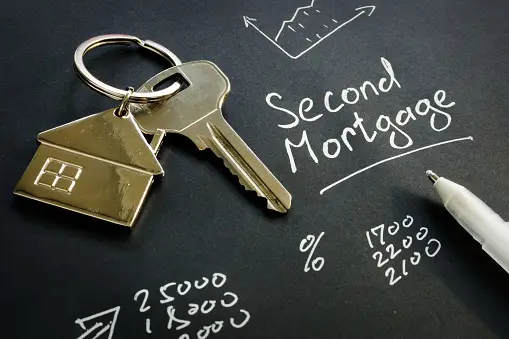A VA loan, provided by the Veterans Affairs program, offers eligible veterans, service members, and their surviving spouses a government-backed home financing option. These loans come with several benefits over conventional mortgages, such as lower interest rates, no down payment requirements, and exemption from mortgage insurance premiums.
Advertisements
Some homeowners might consider acquiring a second mortgage alongside their existing VA loan. Also known as a home equity loan or home equity line of credit (HELOC), a second mortgage serves various purposes like home renovations, debt consolidation, or funding education expenses. This comprehensive guide explores the intricacies of second mortgages and VA loans, detailing their interaction and guiding potential borrowers through these financial options.
Understanding Second Mortgages
A second mortgage is a loan secured by the equity in a homeowner’s property. It leverages the difference between the property’s appraised value and the outstanding balance on the initial mortgage, allowing homeowners access to funds for various needs.
Types of Second Mortgages
Two primary types of second mortgages exist:
Home Equity Loans: These loans have fixed rates and fixed repayment terms, offering a lump sum payment to borrowers for specific needs.
HELOCs: HELOCs are revolving lines of credit with variable interest rates. Borrowers can withdraw funds up to a maximum credit limit as needed, paying interest solely on the outstanding balance.
Advertisements
Purposes of Second Mortgages
Second mortgages serve multiple purposes, including:
Home Renovations: Funding improvements that enhance property value and living spaces.
Debt Consolidation: Merging multiple debts into one loan with a potentially lower interest rate, simplifying debt management.
Education Expenses: Financing education costs to invest in future earning potential.
Emergency Funds: Acting as a backup plan for unforeseen expenses or financial emergencies.
Considerations for Second Mortgages
Before obtaining a second mortgage, homeowners should consider:
Impact on Monthly Payments: Assessing the ability to manage both the first and second mortgage payments comfortably.
Interest Rates and Fees: Comparing rates and fees across lenders to secure favorable terms.
Equity Impact: Recognizing that using home equity for a second mortgage reduces future borrowing potential or resale equity.
Second Mortgages and VA Loans
VA loans have specific requirements regarding second mortgages:
Subordination of Second Mortgages: Second mortgages must have lower priority claims on the property in case of foreclosure.
Purpose-Driven Loans: Second mortgages must serve legitimate purposes related to the property or primary mortgage.
Down Payment Restrictions: Second mortgage funds cannot cover the down payment required by the VA for the first mortgage.
Refinancing a VA Loan with a Second Mortgage
Homeowners may consider refinancing their VA loan with a second mortgage to potentially lower interest rates or access additional cash. However, evaluating the benefits and costs is essential before proceeding with refinancing.
Conclusion
Second mortgages and VA loans serve as valuable financial tools when used wisely. By carefully examining terms, conditions, and potential impacts, homeowners can make informed decisions aligned with their financial goals. Seeking advice from qualified financial advisors can offer valuable guidance throughout the decision-making process.
Advertisements






